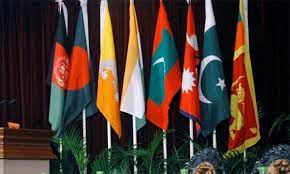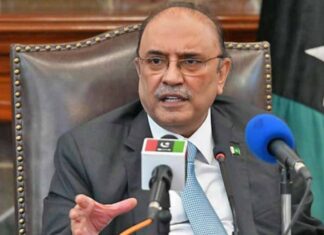Central Asia is the core region of the Asian continent and stretches from the Caspian Sea in the west to China in the east and from Afghanistan in the south to Russia in the north. The vast area of Central Asia, sparse population and abundant resources demand a very careful approach in dealing with the ever energy-hungry world. Superpowers like the USA, China and Russia are involved in the Asia region to continue to exert their influence in any energy-related deal for their interests in the outcome of the new Great Game. The region has the world’s biggest reserves of untapped fossil fuels, and estimates range from 50 to 110 billion barrels of oil, and from 170 to 463 trillion cubic feet of natural gas.
The Central Asian Republics, individually and collectively, moved to forge multi-vector links with states in the region and outside, while maintaining their traditional ties to Russia. The USA is also interested in various oil and gas export routes. The USA favours the Turkmenistan-Afghanistan-Pakistan-India (TAPI) pipeline because of the economic dependency it creates of regional powers on each other, minimizing the chances of conflicts and maximizing their cooperation as well.
Russia prefers the Iran-Pakistan-India pipeline (IPI) over TAPI and has offered to finance the projects. Pakistan due to its links with both central and south Asia, assumes great significance in the whole scenario. Its importance can enhance manifold, would it successfully play a bridge state role through mutually beneficial trade and by providing easy access to these landlocked states?
After the disintegration of the USSR, the Chinese trade has increased 200 times to reach $80 billion in 2020. The China-Pakistan Economic Corridor (CPEC) would link Gwadar with China. The Chinese idea of an Asian highway and The US idea of a New Silk Road are gaining gradual acceptance. The regional trade benefits by developing 58 various potential corridors to link Central Asia to sea ports in Iran and Pakistan were studied. The majority of these roads would link to Pakistani ports. The calculated increase in the regional trade was 170 percent, whereas 115 percent was the increase in combined transit trade. The total growth was estimated to be $6 billion with 5 percent GDP growth annually. The participating countries would enjoy enhanced employment of 2 million jobs at a combined nominal investment of less than $6 billion for the entire region. TAPI with $2 billion and power projects of worth $500 million are being reconsidered to expand the options among the regional countries in general and Pakistan in particular to fulfill its energy demands.
Russia will also take a central role, as Moscow will be able to secure access to the Gwadar deep seaport in Pakistan’s Balochistan province– that will prove a gamechanger for the Russian economy. Pakistan should seek close energy cooperation with Russian energy companies to explore oil and gas reserves in Pakistan as well as establishing Russian export zones in Gwadar to facilitate trade between Russia and its clientele across the world.
Keeping in mind the advantages, disadvantages and implication repercussions, Pakistan should engage India diplomatically, while gaining the confidence of its own people, and evolve measures for confidence building between the two states. However, to achieve this, Pakistan will have to start a dialogue to ensure the solution of the Kashmir issue and foolproof security arrangements have to be made for the transition of containers and personnel. Pakistan must use regional and international forums in order to find an amicable solution to the Kashmir issue under UN resolutions. We shall find ways to end the present deadlock with India amicably in order to normalize the relation and proceed further for the better future of our future generations.
Pakistan must develop close trade and commerce relations with Russia through Central Asia, and also facilitate the construction of road and railway infrastructure needed to connect Russian export hubs.
As India brings SAARC to its knees due to its hegemonic ambitions, Pakistan needs to form new alliances with its Central Asian partners based on quantifiable interests– while engaging all South Asian countries at a bi-lateral level to promote trade. Pakistan’s policymakers must re-consider Pakistan as a Central Asian State.
Pakistan would be a hub of economic activity, or roundabout for trade in the region, by providing links in the form of ports, pipelines and land routes to facilitate at the domestic, regional and even at the global level. India, with a population of around 1.3 billion, is the world’s second most populous country and ranks fifth in the world in terms of primary energy consumption, accounting for about 4 percent of the world’s commercial energy demand. India has been making all out efforts to persuade Pakistan for utilizing the most beneficial and preferable land route to Central Asia via Pakistan. India would have to rethink its strategy in the region to gain access to Central Asian energy resources for its future needs that are going to be increased 95 percent by 2030. Engagement of Central Asia is essential to Indian economic security to fulfill the future energy requirements, and the North and South route provide alternatives to Indian trade with Central Asian states, but at a higher cost than the route through Pakistan.
The availability of the route through Pakistan is largely dependent upon the solution of the Kashmir issue and the relations between India and Pakistan. Economic security has become a matter of national security; hence the trade activity of the route through Pakistan would bring an option to resolve Kashmir issue amicably and also tremendous benefits for Pakistan economically, enhancing national security as well.
Pakistan’s foreign policy, since its very inception, has been conditioned by two interrelated factors: Indian aggression in Occupied Kashmir and an urge to seek a strategic balance with India. India is currently the largest regional country trading to Afghanistan, spending over $2 billion since 2001. Indian covert support to the militants on the Pak-Afghan border, and involvement in Balochistan needs to be managed wisely in our own interests while talking trade through Pakistan.
The Indian military presence in Tajikistan and Afghanistan, and her defense cooperation with Central, Adia has great security implications for Pakistan. Establishment of military bases in Central Asia since 2002 near the border of Afghanistan indicates the level of strategic cooperation and interest of India and has connotation for Pakistan’s security concerns especially under the prevailing environment of trouble from the western border of Pakistan with likely Indian involvement. Thus Pakistan has to walk a tightrope and do a very careful balancing act to safeguard its interests in the region.
The security and safety of trade routes can be ensured by formulating SOPs agreeable to all stakeholders. Pakistan must ensure all safeguards are in place regarding security concerns and diplomatic compulsions in order to gain strength from the route in the long run. It must ensure no unwanted goods or personnel are offloaded on route. A reliable system must be implemented for entry and exit, Sealing containers, surveillance and surprise checks must ensure no unlawful activities. Tracking system may be introduced to track the vehicles from entry to exit.
Keeping in mind the advantages, disadvantages and implication repercussions, Pakistan should engage India diplomatically, while gaining the confidence of its own people, and evolve measures for confidence building between the two states. However, to achieve this, Pakistan will have to start a dialogue to ensure the solution of the Kashmir issue and foolproof security arrangements have to be made for the transition of containers and personnel. Pakistan must use regional and international forums in order to find an amicable solution to the Kashmir issue under UN resolutions. We shall find ways to end the present deadlock with India amicably in order to normalize the relation and proceed further for the better future of our future generations.























